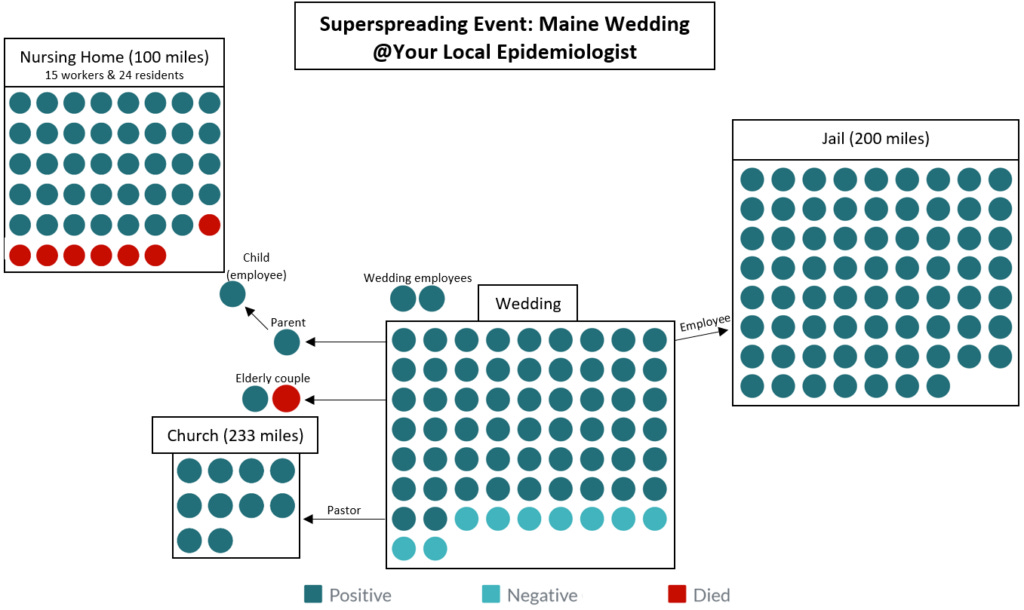Superspreading Events (SSE)...
...are fascinating to me. Maybe because they are so difficult to predict, and therefore, challenging to prevent. They are also not new. In 1997, scientists estimated that 20% of the population contributes to 80% of transmission of infectious diseases. This has been seen with TB, measles, SARS, MERS, and Ebola. For example, during SARS, one hotel guest caused 4 national and international clusters. For Ebola, 3% of cases were responsible for 61% of infections.
Several SSEs have been described during the COVID19 pandemic (see my previous posts). Last month, there was another one at a Maine wedding. This wedding took place in Millinocket, Maine, a rural town with a population of 4,300. Before the wedding, there were NO cases of COVID19 in the town. The wedding turned into the state’s largest outbreak.
What happened? See figure. Briefly,
65 people attended the wedding; 56 caught COVID19 (86% attack rate)
This has now spread to 270 people over 500 miles
8 people have died, of which, none attended the wedding
Small events can add up to a lot. In fact, the “smallness” can cause a false sense of security. What does matter is… 1) how infectious that index case is; 2) how many close contacts the index case had at the event; 3) over what time period; 4) and where (indoor vs. outdoor).
A psychologist at Princeton recently stated, “When you live in a war zone, after a while, everyday risk becomes baseline. Our neurons are wired in such a way that we only respond to change. People have gotten used to being in this new state of danger, adapting to it, and therefore have not taken enough precaution anymore”. The wedding was inside. No one wore masks. No one social distanced. It exceeded Maine’s 50-person limit. This is yet another example of pandemic fatigue. Also, an example of the importance of coordinated and timely contract tracing, testing, and quarantining during a pandemic. Speed is essential.
Love, YLE
Data Sources:
SSE: https://wwwnc.cdc.gov/eid/article/26/6/20-0495_article#r12
20/80 rule: https://www.pnas.org/content/94/1/338
Maine CDC briefing: https://www.youtube.com/watch?v=DwDTpOF_RLQ&feature=youtu.be




